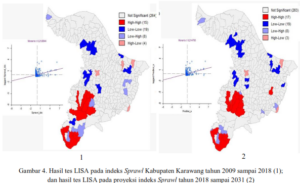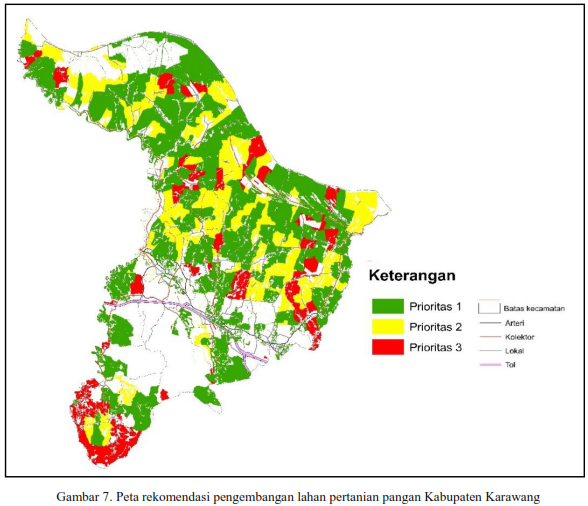Urban Sprawl Analysis as a Recommendation of Spatial Utilization Control for Agricultural Land Development in Karawang Regency

Author: Masyitah Tri Andari, Andrea Emma Pravitasari, Syaiful Anwar
Abstract: The increasing conversion of agricultural land to non-agricultural land is the central issue in Karawang Regency. It is caused by the increasing population, urbanization, industrialization, urban expansion, and its position in the Jakarta Bandung Mega Urban Region (JBMUR) corridor. The increasing need for space in urban areas encourages the development to the city’s outskirts (urban sprawl). Urban sprawl is the biggest challenge in Karawang Regency’s spatial planning. The purpose of this study is to identify the spatial pattern of urban sprawl conditions formed from 2009 until 2018 and projecting urban sprawl in 2018 until 2031 as a recommendation for controlling space use for agricultural land development. The method used is urban sprawl analysis with related research, Moran index autocorrelation analysis and Local Indicator of Spatial Association (LISA), analysis of land use alignment and spatial patterns of spatial plan, and overlays. The results of this study indicate that the spatial distribution of urban sprawl occurs along the Cikampek, Telukjambe Barat, Telukjambe Timur, Pangkalan, and Tegalwaru toll roads. The urban sprawl that occurred in 2009 until 2018 has the type of leapfrog development. There was a change to the kind of urban sprawl to kind of ribbon development and an increase in the urban sprawl of 67.14 km2 in the projected urban sprawl in 2018 until 2031. Land use with conformity is much broader than land use that is not aligned with spatial planning. Therefore, first priority recommendation for agricultural land development still dominates in Karawang Regency.
Keywords: JBMUR corridor, land conversion, spatial plan, urbanization
Journal URL: https://journal.ipb.ac.id/index.php/p2wd/article/view/35212/22978

 Indonesia
Indonesia